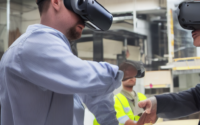Using Drones for Public Safety and Emergency Response
Using Drones for Public Safety and Emergency Response
Introduction to Drones in Public Safety:
Drones, also known as Unmanned Aerial Vehicles (UAVs), have become essential tools in various industries, including public safety and emergency response. These small aircraft, controlled remotely, are equipped with cameras and sensors that provide valuable aerial data. In this article, we will explore the various ways drones are being used to enhance public safety and improve emergency response efforts.
Surveillance and Monitoring:
One of the primary uses of drones in public safety is surveillance and monitoring. Law enforcement agencies can use drones to gather real-time, aerial footage of a crime scene, a missing person search area, or a disaster-stricken region. By utilizing drones, authorities can quickly assess a situation without putting personnel in harm’s way. Drones equipped with thermal cameras can also be used for night surveillance, making them invaluable tools in law enforcement operations.
Search and Rescue Operations:
Drones play a crucial role in search and rescue operations. Equipped with high-resolution cameras and thermal imaging technology, drones can cover large areas in a fraction of the time it would take ground teams to do so. In cases of natural disasters or missing persons, drones can fly low to the ground, navigate through challenging terrain, and transmit images back to the command center, aiding in the swift location of survivors. Drones have proven to be instrumental in saving lives during emergencies.
Traffic Management and Accident Reconstruction:
Drones are increasingly being used to manage traffic flow and reconstruct accident scenes. By monitoring traffic patterns from above, authorities can identify congestion points, accidents, and potential hazards on the roadways. In the event of a traffic accident, drones can capture detailed images and footage of the scene, providing valuable evidence for investigations and insurance claims. This data can help authorities make informed decisions to improve road safety and traffic management strategies.
Disaster Response and Damage Assessment:
During natural disasters such as hurricanes, earthquakes, or wildfires, drones are essential for assessing damage and coordinating response efforts. Drones can fly over affected areas, capturing high-definition images and videos that help emergency responders evaluate the extent of the damage. This aerial data enables authorities to prioritize areas for assistance, deploy resources effectively, and plan evacuation routes. Drones have revolutionized disaster response by providing critical information in real-time.
Firefighting and Hazardous Material Detection:
In firefighting operations, drones equipped with thermal cameras and gas sensors are used to detect wildfires, monitor fire lines, and assess the spread of flames. By providing firefighters with a bird’s-eye view of the fire’s progression, drones help teams strategize their approach and protect communities from harm. Drones are also employed to detect hazardous materials in industrial accidents or chemical spills, allowing responders to identify the source of contamination and mitigate risks to public health.
Challenges and Considerations:
While drones offer innovative solutions for public safety and emergency response, there are challenges and considerations to address. Privacy concerns, airspace regulations, and limited flight endurance are some of the key issues that need to be managed. It is crucial for organizations utilizing drones to adhere to strict privacy protocols, secure data transmission, and comply with local aviation laws. Additionally, regular maintenance and training of personnel are essential to ensure the safe and effective operation of drones in critical situations.
Future Trends and Developments:
The use of drones in public safety and emergency response is expected to evolve with advancements in technology. Artificial intelligence (AI) integration, autonomous flight capabilities, and expanded sensor options will enhance the functionality of drones in critical missions. Collaborations between drone manufacturers, software developers, and public safety agencies will lead to the development of specialized drones tailored to specific emergency scenarios. As the technology continues to mature, drones will play an increasingly vital role in safeguarding communities and minimizing risks during emergencies.

